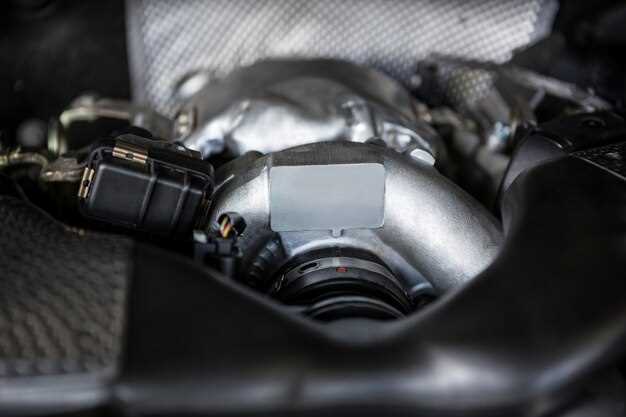
Coolant leaks pose a significant risk to vehicle performance and engine longevity, particularly in European cars known for their robust engineering and advanced technology. Understanding how to identify these leaks is vital for vehicle owners who wish to maintain optimal performance and avoid costly repairs. European vehicles often have unique designs and components that require careful attention in diagnosing issues related to coolant systems.
One of the primary causes of coolant leaks in European vehicles is wear and tear on hoses and seals over time. These components can degrade due to heat cycling, exposure to chemicals, and age, leading to potential leaks that may go unnoticed until they cause serious engine damage. Regular inspections and knowledge of typical leak locations can help owners address problems early and ensure their vehicles remain reliable.
Additionally, the complexity of the cooling systems in many European models often necessitates specialized tools and knowledge of specific diagnostic techniques. Common symptoms of coolant leaks include overheating engines, visible puddles under the vehicle, and low coolant levels. By equipping themselves with the right information and tools, vehicle owners can effectively identify and address coolant leaks, maintaining their cars’ performance and safety on the road.
Visual Inspection Techniques for Detecting Coolant Leaks

Visual inspection is an essential initial step in identifying coolant leaks in European vehicles. By systematically examining various components of the cooling system, vehicle owners and technicians can pinpoint potential leakage sources. Here are some effective techniques for conducting a thorough visual inspection.
Begin your inspection under the hood, focusing on the radiator, hoses, and clamps. Look for signs of coolant residue or wet spots, which may indicate a leak. Pay attention to the condition of rubber hoses; cracks or bulges can increase the likelihood of failure. Ensure that clamps are tightly fastened, as loose clamps can lead to coolant escaping from the system.
Next, inspect the water pump and thermostat housing areas. Any signs of corrosion or staining around these components could suggest coolant leakage. It is crucial to check the weep hole on the water pump, as coolant escaping from this spot can indicate a failing pump.
Do not forget to examine the engine block and cylinder head for any visible signs of leakage. Look for green, orange, or pink coolant stains, which can become evident over time. Areas around gaskets and seals should be scrutinized as well, as these are common spots for leaks to occur.
Another effective technique is to inspect the ground beneath the vehicle. Coolant stains on the pavement can provide clues about the severity and location of a leak. Look for puddles or damp spots, particularly after the engine has been running.
During your inspection, make sure to check the reservoir and overflow tank. Cracks in these plastic components can lead to leaks that might not be immediately visible. Ensure the tank cap is secure, as a faulty cap can also contribute to coolant loss.
Finally, it’s beneficial to use a flashlight to illuminate dark areas that are difficult to see. This technique can help reveal hidden leaks or coolant trails that would otherwise go unnoticed. Regular visual inspections can help catch coolant leaks early, preventing more extensive damage and costly repairs down the road.
Using Diagnostic Tools to Locate Coolant Leak Sources
Identifying coolant leaks in European vehicles can be a challenging task, but the use of advanced diagnostic tools can significantly streamline the process. Various devices and technologies are available to assist mechanics and car enthusiasts in pinpointing the exact location of leaks, which can save time and prevent costly repairs.
One of the most effective tools for diagnosing coolant leaks is the pressure tester. This device allows technicians to pressurize the cooling system and monitor for any drops in pressure. By observing where coolant begins to seep or spray, professionals can accurately locate the leak’s source. Pressure testing is particularly useful for spotting leaks that may not be immediately visible, such as those within the engine block or hidden connections.
Another essential tool is the infrared thermometer, which measures surface temperatures. By scanning the cooling system under operating conditions, mechanics can identify abnormal temperature variations that signify a leak. Areas that are unusually cool compared to the surrounding components may indicate a loss of coolant, helping to focus further investigation.
Leak detection dye is also a popular method employed by professionals. This fluorescent dye is added to the coolant and circulates through the system. When a leak occurs, the dye escaping with the coolant can be detected using a UV light. This method is particularly effective for locating small leaks that are difficult to identify with other tools.
Advanced diagnostic scanners are invaluable for modern vehicles equipped with onboard diagnostics. These scanners can read fault codes that may indicate cooling system malfunctions. Although they do not directly identify leaks, they can reveal issues related to coolant temperature sensors and related components, guiding mechanics toward potential leak sources.
Ultrasonic leak detectors represent a cutting-edge approach to identifying coolant leaks. These devices can detect the high-frequency sounds generated by escaping fluids, making them highly effective for locating leaks in hard-to-reach areas. Ultrasonic detection can greatly reduce the time spent on leak diagnostics and enhance the accuracy of repairs.
In summary, utilizing diagnostic tools such as pressure testers, infrared thermometers, leak detection dyes, advanced scanners, and ultrasonic detectors can significantly enhance the efficiency of locating coolant leaks in European vehicles. By employing these methods, technicians can ensure thorough investigations and provide reliable solutions, ultimately improving vehicle reliability and performance.
Common Signs of Coolant Leaks in Specific European Car Models

Identifying coolant leaks is crucial for the maintenance of European vehicles. Different models may exhibit unique symptoms. Below are common signs of coolant leaks associated with specific European car brands.
Volkswagen Golf: Look for a distinct pool of green, orange, or pink fluid beneath the car. Engine overheating is another common symptom, often accompanied by the smell of burnt coolant. Dashboard warning lights may also illuminate, indicating low coolant levels.
BMW 3 Series: Check for signs of coolant discoloration or a sweet smell inside the cabin. The engine may show signs of overheating, especially during heavy use. Low coolant levels can also result in steam coming from the engine bay.
Audi A4: Noticeable fluid under the vehicle, particularly on the ground near the front can indicate a leak. If you experience reduced heating performance in the cabin or thermostat issues, these could be linked to coolant leaks.
Mercedes-Benz C-Class: Pay attention to fluid stains on your driveway, which might appear like bright green or yellow puddles. The engine may overheat frequently, and the vehicle might display warning messages regarding coolant levels on the dashboard. Listen for gurgling sounds from the cooling system.
Volvo S60: Check for fluctuating temperature gauges and low coolant warnings. A drop in coolant levels without visible leaks can also indicate a hidden leak, potentially leading to engine performance issues. Pay attention to any signs of steam or smells in the cabin.
Porsche 911: Monitor coolant levels regularly, as any unexpected decrease can indicate a leak. Engine performance issues or overheating, along with visual inspection revealing wet spots in the engine compartment, are key clues to address immediately.
Understanding these specific symptoms can lead to early detection and proper maintenance, ultimately extending the lifespan of your European vehicle.




